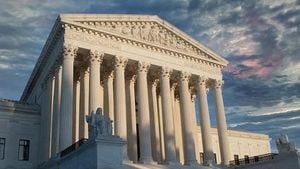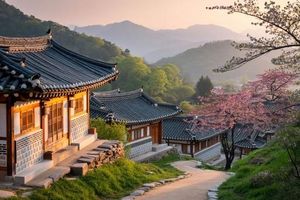The US Open is unlike any other stop on the Grand Slam circuit. Where Wimbledon is a bastion of decorum and Roland Garros exudes Parisian elegance, Flushing Meadows is a riot of sound, color, and character. Every August, the tournament transforms New York into a tennis carnival, drawing raucous crowds, celebrity spectators, and a constant, electric buzz that pulses through the city and the courts. For some players, this chaos is a welcome challenge; for others, it’s an obstacle to overcome—or simply endure.
Frances Tiafoe, a two-time semi-finalist at the US Open, is one of those who thrive in this unique environment. “I operate well in chaos,” Tiafoe admitted, a sentiment echoed by fellow American Madison Keys and rising star Ben Shelton. Shelton, who reached his first major semi-final at Flushing Meadows in 2023, confessed, “I guess I find peace in the chaos, because I feel more uncomfortable at the quiet tournaments.” For these players, the louder the atmosphere, the better. The music at changeovers, the bold-faced names in the stands, and the sheer volume of the crowd seem to fuel their performances.
Yet, the boisterous energy of the US Open isn’t always a positive force. Just this week, a match ground to a halt for over five minutes as spectators booed and shouted, their jeers incited by 2021 champion Daniil Medvedev. The chaos erupted after chair umpire Greg Allensworth ruled on a bizarre interruption: a photographer wandered onto the court, breaking the flow of play. Medvedev, visibly angered, remarked about the unruly fans, “They didn’t want to stop. So, whatever.” The incident was just another reminder that, in New York, the line between passionate support and pandemonium is easily crossed.
It’s not just the crowds that set the US Open apart. The tournament’s environment is defined by the constant drone of overhead airplanes, the Manhattan-Queens commute, and a sensory overload of smells—everything from grilled food to cannabis wafts through the air. Monica Seles, who won back-to-back US Open titles in 1991 and 1992, explained, “It’s something you really can’t train the brain to kind of deal with. You just adjust to it.” Her words ring true for many players who have learned to adapt, even if reluctantly.
Champions like Aryna Sabalenka, who triumphed in 2024, Marin Cilic (2014), and Petra Kvitova all recall their initial struggles with the US Open’s anarchy. Sabalenka once found the environment “really confusing,” but has since learned to embrace it. For others, the relationship with Flushing Meadows shifts over time. French veteran Adrian Mannarino, now 37 and fresh off an upset of 29th-seeded Tallon Griekspoor in his 15th US Open appearance, reflected, “In my 20s, I loved coming here. There was so much to do. But the older I get, the less I enjoy being here. It’s a little bit chaotic. There’s always a lot of noise. A lot of smells everywhere. I’ve visited most of the places in New York; I don’t need to go to Central Park for the 1,003rd time.” He added with a chuckle, “It used to be fun, but sometimes I’m like, ‘Gosh, I wish I could concentrate a little bit more.’”
The contrast between Flushing Meadows and other Grand Slam venues is stark. Arthur Ashe Stadium, the tournament’s main stage, seats 23,859 fans—nearly 10,000 more than Wimbledon’s Centre Court or the French Open’s Court Philippe-Chatrier. The difference isn’t just in numbers, but in atmosphere. Emma Navarro, who reached the US Open semi-finals last year, described it best: “Wimbledon, for example—it’s proper, it’s elegant, it’s elevated. People are definitely more quiet and respectful, I guess you could say. US Open, it feels a bit more casual. Casually rowdy, I guess I would call it.”
Ben Shelton, who’s found his stride in this environment, summed it up: “I guess I find peace in the chaos, because I feel more uncomfortable at the quiet tournaments.” The constant hum at Ashe and other arenas is simply part of the US Open’s DNA—a feature, not a bug, for many of its stars.
But for every player who feeds off the energy, there’s another who finds it draining. Agnieszka Radwanska, the 2012 Wimbledon runner-up, never managed to progress past the fourth round in New York. She lamented, “Everything takes so much energy from you and just sucks it up. Everything is loud. All the smells around, like the hamburgers. Everything is really noisy. The traffic. I respect the players that don’t see the difference and don’t feel that and can play like nothing is happening.”
Even away from the courts, the city itself can be overwhelming. Elisabetta Cocciaretto, who stunned 2024 US Open finalist Jessica Pegula at Wimbledon last month, found herself seeking refuge from the madness. “I like to separate myself a bit,” Cocciaretto explained. “Because otherwise, you’re amid the madness. And if there’s too much of that, your head explodes.” Her solution? Ditch the official tournament hotel for a quieter, less conventional spot in the city.
Casper Ruud, the 2022 US Open runner-up, remembers feeling “overwhelmed” during his first visit as a junior. While he’s come to appreciate the city’s vibrant restaurant scene, there’s one aspect of New York he still can’t stomach: “I’m not a big fan of the smell of cannabis when you walk around. ... Every corner of every street, you smell it.”
For many, the US Open is a test of adaptability as much as athleticism. Monica Seles’s advice still echoes: you can’t train for the chaos, but you can learn to live with it. Champions like Sabalenka and Cilic have done just that, transforming initial confusion into acceptance—and, sometimes, victory.
As this year’s tournament unfolds, the debate over Flushing Meadows’ unique atmosphere continues. Is it a crucible that forges champions, or an obstacle course that saps their strength? One thing is certain: the US Open’s chaos is here to stay, and whether players love it or loathe it, they’ll have to find their own way to survive—and maybe even thrive—amid the madness of New York.




